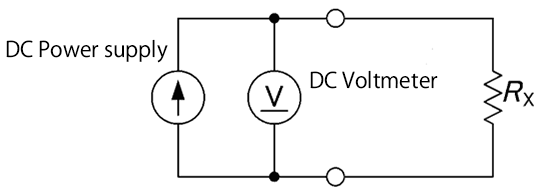Differences of Resistance Measurement Methods
QThere are two types of resistance measurement methods: DC method and AC method. Which should be chosen?
A
The choice of either DC or AC method is determined by the object to be measured. See the table for each of the advantages and disadvantages.
| DC Resistance Meter | AC Resistance Meter | |
|---|---|---|
|
Measurement signal Detection voltage | See below Figure 1 | See below Figure 2 |
| Advantage | High-precision measurement is possible. |
Not affected by EMF. Can measure reactance. |
| Disadvantages |
Influenced by electromotive force due to lack of DC superimposed measurement. (OVC function allows correction of only thermal EMF) | Difficult to improve accuracy |
| Purpose | DC resistance, contact resistance, and insulation resistance of transformers, motors, and other windings, and wiring resistance of PCBs | Battery impedance, inductor, capacitor, and electrochemical measurements |
| Measuring range | 10-8 to 1016 Ω | 10-3 to 108 Ω |
| Hioki measuring instruments | Resistance Meters Digital Multimeters, Testers Insulation Testers(MΩ HiTester) | Battery Testers Impedance Analyzers LCR Meters |
Figure 1
Figure 2


